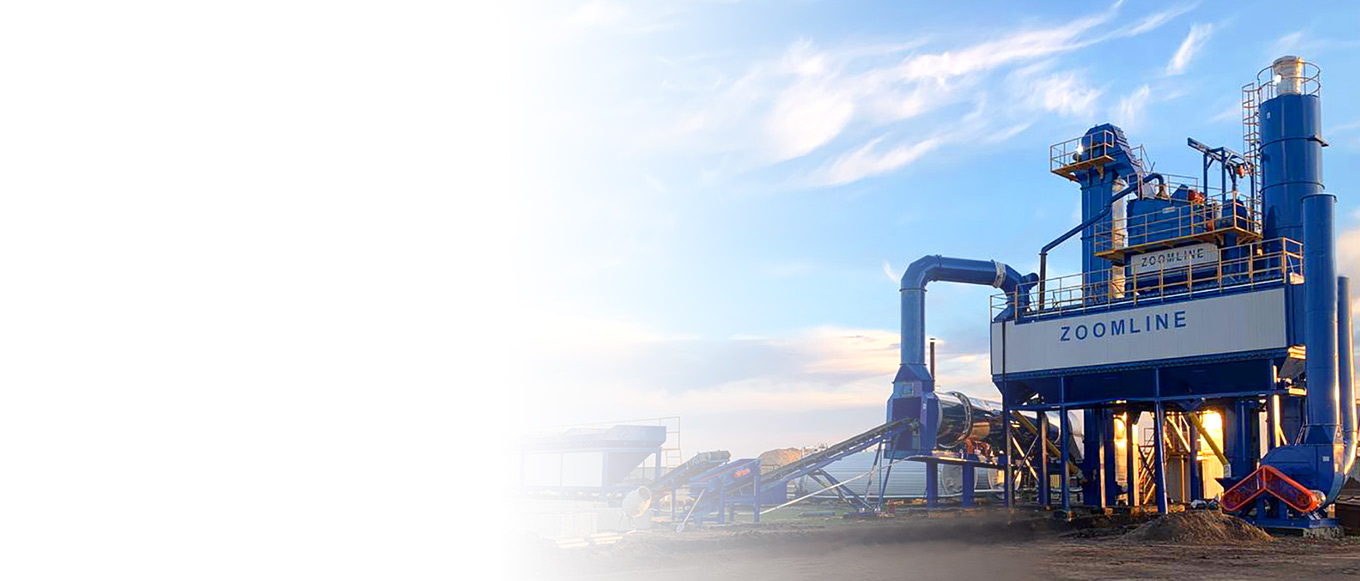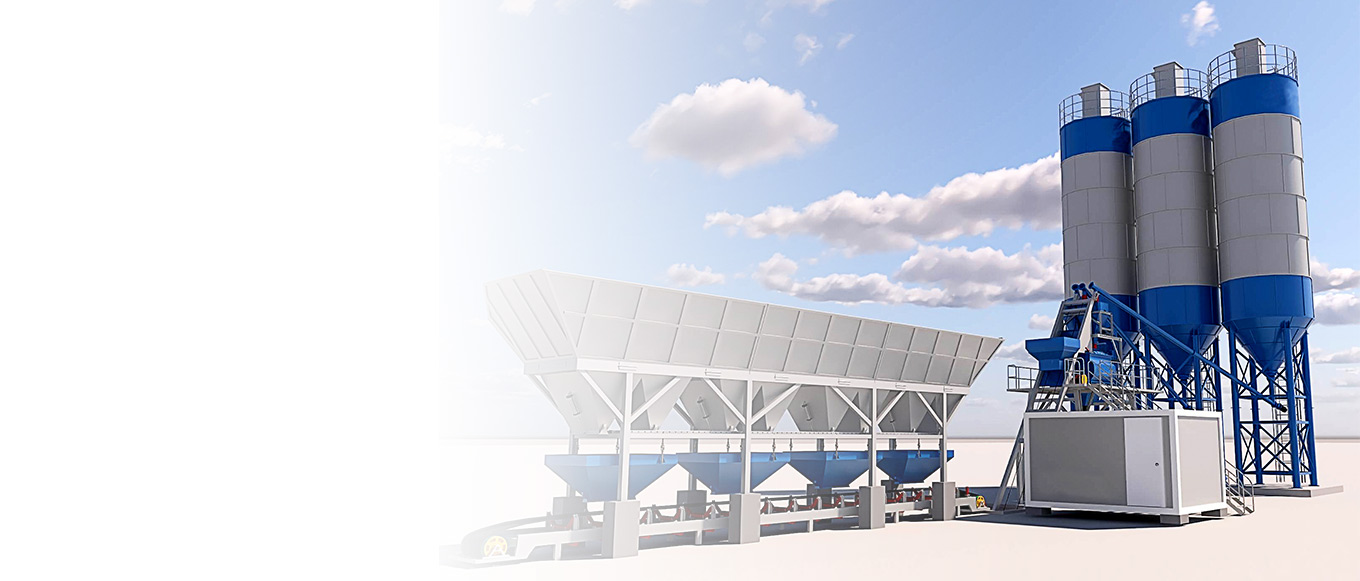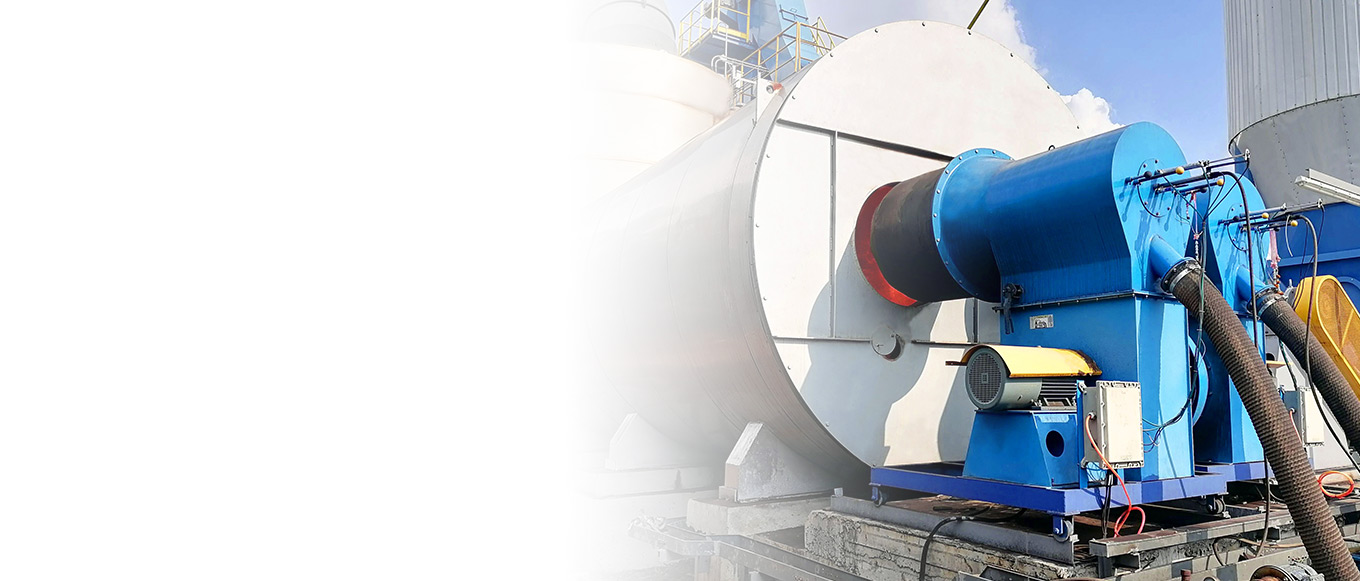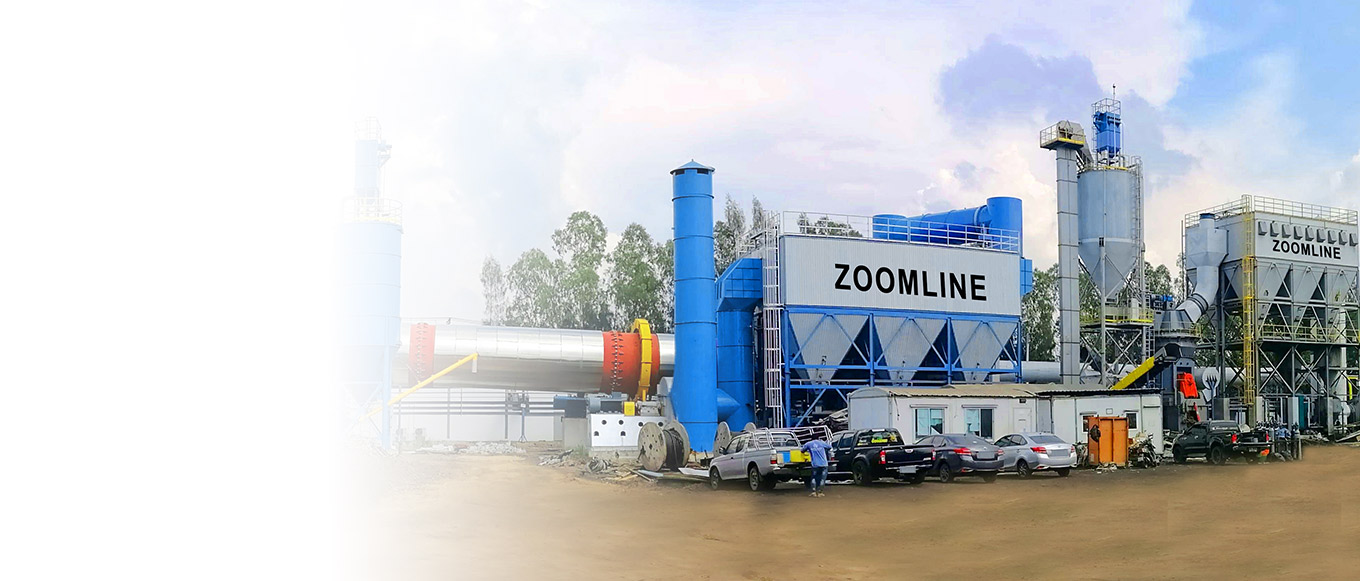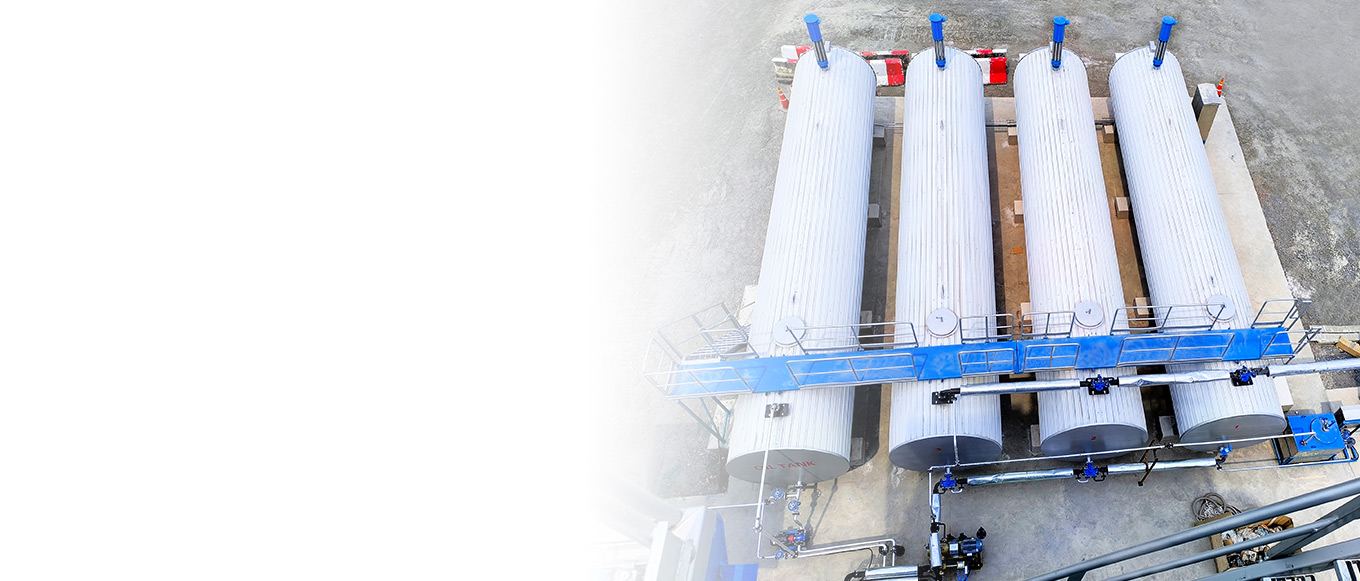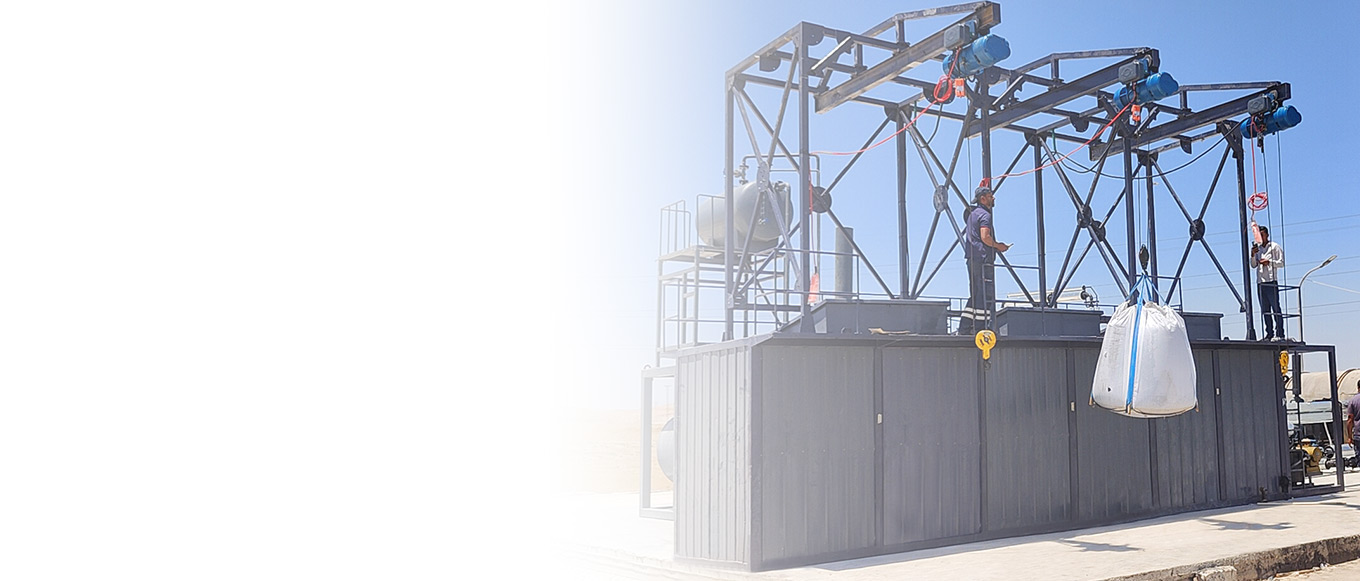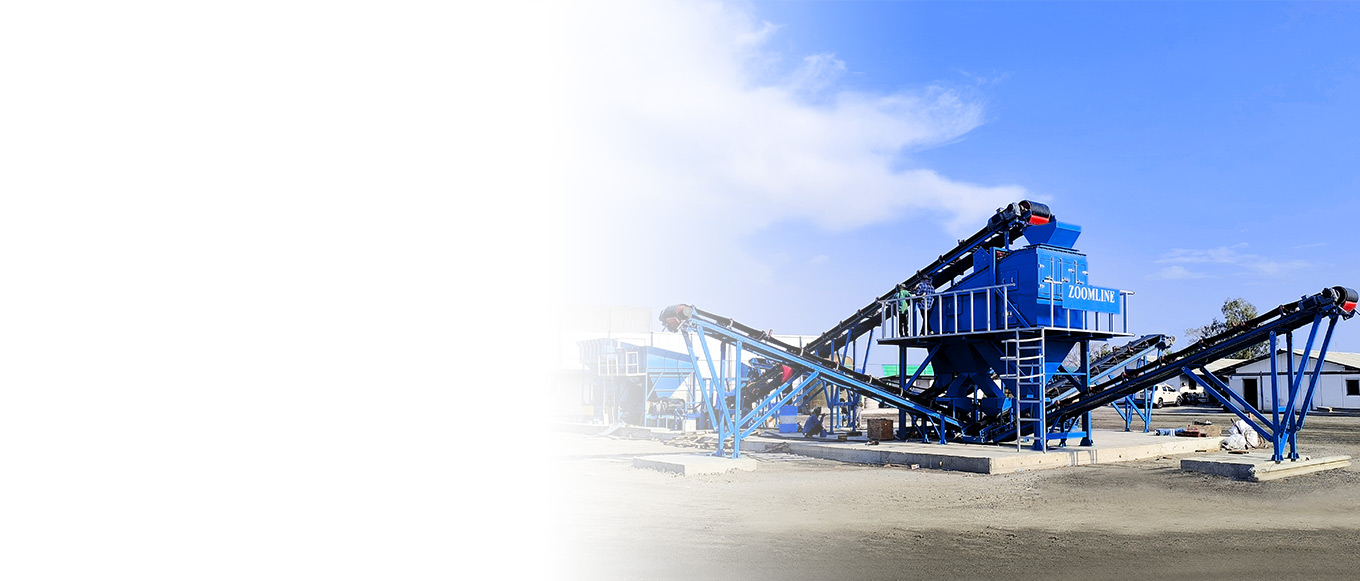In road construction, asphalt mixing plants serve as core equipment, blending aggregates, asphalt, and other raw materials according to precise ratios to produce compliant asphalt mixtures. Their performance directly impacts project timelines, quality, and costs. The construction and maintenance of all road types rely on their stable operation. Extending the lifespan of asphalt mixing plants holds significant importance for engineering enterprises. It reduces equipment replacement investments and depreciation costs, boosts production efficiency to increase profits, minimizes unexpected downtime to prevent project delays, and enhances corporate market competitiveness.
Achieving long-term reliable operation requires developing scientific strategies across multiple dimensions, including maintenance, operation, spare parts selection, and environmental management. This article details key methods for extending equipment lifespan, providing practical guidance for enterprises.
Importance of Proper Maintenance for Asphalt Mixing Equipment
Regular inspection and maintenance of asphalt mixing plants serve as the “first line of defense” against unexpected failures. During prolonged operation, components inevitably experience wear, loosening, and other issues. If not promptly identified and addressed, minor problems can escalate into major malfunctions, leading to sudden equipment shutdowns. For instance, minor wear on mixing blades, if not inspected and replaced promptly, may accelerate drum wear, ultimately causing drum deformation and significantly increasing repair costs.
Long-term, standardized maintenance delivers multiple core benefits to enterprises. First, stable equipment conditions ensure precise asphalt mixture ratios and uniform mixing, guaranteeing consistent product quality that meets engineering requirements and avoiding rework due to quality issues. Second, preventive maintenance costs are substantially lower than corrective repairs after failures. Industry data indicates that companies implementing preventive maintenance programs reduce annual equipment repair expenses by 30%-50% compared to those relying solely on corrective repairs. Most importantly, consistent maintenance slows equipment aging and significantly extends overall service life.
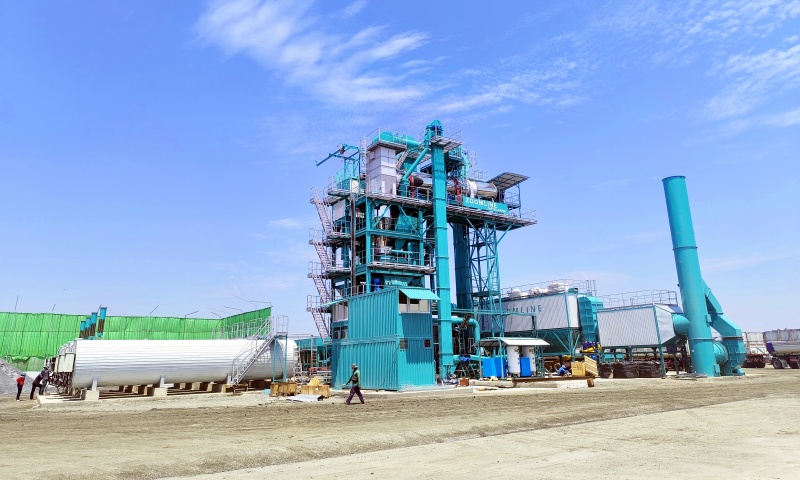
Daily Maintenance Practices
Lubrication of Moving Parts
Moving parts such as bearings, gears, and chains in asphalt mixing equipment serve as the “joints” of the machinery and require regular lubrication. Select appropriate lubricants according to the equipment manual—for instance, bearings require high-temperature grease (operating range: -20°C to 200°C), while gears need heavy-duty industrial gear oil. Lubrication frequency should be adjusted based on operating hours. Generally, bearings should be inspected for lubrication every 50 hours, with replenishment as needed. Gears and chains require lubricant application every 100 hours to prevent dry grinding and accelerated wear due to insufficient lubrication.
Equipment Cleaning
Dust and residual materials accumulating on surfaces or internally can impair heat dissipation, reduce operational efficiency, and even cause component blockages. After daily operation, remove residual asphalt mixture from conveyors and mixing drums to prevent hardened material from adhering to components and increasing operational load. Baghouse dust collectors require monthly disassembly and cleaning to remove dust from filter bags. This prevents clogged pores from causing excessive negative pressure, which could impair asphalt fume exhaust and overall system stability. Additionally, weekly cleaning of the equipment housing and electrical control cabinet surfaces is required to prevent dust ingress into electrical components, which could cause short circuits.
Wear Part Inspection
Lining plates, mixing blades, and screens are core wear components of asphalt mixing equipment requiring regular wear inspections. Mixing blades should undergo weekly visual checks. Replace blades immediately if wear reduces the thickness to 50% of the original dimensions, or if significant cracks or deformation appear, to prevent uneven mixing of the asphalt mixture. Lining plates require monthly inspection. If connecting bolts to the mixing drum are loose, or if the plate surface shows severe dents or wear, tighten or replace promptly to prevent plate detachment and drum damage. Screens should be inspected every two weeks. If holes or deformation occur, repair or replace immediately to prevent unqualified sand/stone particles from entering the mixing drum and compromising the asphalt mix quality.
Anti-Blockage Maintenance
Blockages in the burner, drying drum, or asphalt pipeline directly prevent normal equipment operation. Clean burner nozzles weekly to remove carbon deposits and impurities, ensuring proper fuel atomization. This prevents incomplete combustion due to nozzle blockage, which reduces drying drum heating efficiency. After daily operation, clean residual sand, gravel, and asphalt from the drying drum interior to prevent material buildup and ensure uniform drying of aggregates. After daily operation, asphalt pipelines must be flushed with hot asphalt (temperature ≥130°C) to prevent cooling and solidification from causing blockages. Additionally, monthly inspections of pipeline valves are required to ensure smooth operation and the absence of leaks.
Regular Inspection and Monitoring
Establish Inspection Checklists
Enterprises must develop “daily-weekly-monthly” tiered inspection checklists based on equipment operational patterns to ensure comprehensive coverage. Daily checklists should include: lubrication component oil levels, residual material in conveyors and mixing drums, electrical control cabinet indicator light status, and burner nozzle cleanliness. Weekly checklist: Wear on mixing blades and liners, screen integrity, dust accumulation on baghouse filter bags, and sealing integrity of asphalt pipeline valves. Monthly checklist: Wear on dryer cylinder inner walls, sensor accuracy (temperature, pressure, liquid level), foundation settlement, and operational noise of motors and reducers.
Critical Parameter Monitoring
Temperature, fuel consumption, and pressure are key indicators reflecting equipment operational status and require real-time monitoring. The temperature of sand and gravel exiting the drying drum should be maintained between 160°C and 180°C. Excessively high temperatures cause over-drying of aggregates, impairing asphalt-aggregate adhesion. Conversely, excessively low temperatures result in excessive aggregate moisture content, leading to “white spots” in the asphalt mixture. Fuel consumption must be recorded daily. If consumption suddenly increases by more than 10% on any given day, it may indicate burner nozzle blockage, poor fuel atomization, or damage to the dryer cylinder insulation layer. Prompt investigation is required. Equipment pressure monitoring should focus on drying drum negative pressure (maintained between -200Pa and -500Pa) and asphalt pump outlet pressure (stabilized at 0.8MPa-1.2MPa). Immediate shutdown and inspection are required if abnormal pressure fluctuations occur.
Application of Digital Monitoring Systems
With the advancement of Internet of Things technology, equipping asphalt mixing plants with sensors and digital monitoring systems has become a critical means for real-time equipment status tracking. By installing temperature and vibration sensors on critical components such as bearings, motors, and drying drums, operational data is transmitted in real time to the backend management system. When data exceeds preset thresholds (e.g., bearing temperature surpassing 80°C or motor vibration amplitude exceeding 0.1mm), the system automatically triggers an alarm to alert personnel for prompt action. After installing digital monitoring systems on three asphalt mixing plants, a road construction company successfully detected two instances of bearing overheating and one case of insulation layer damage in the drying drum ahead of time. This prevented major equipment damage and reduced downtime losses by over 500,000 yuan.
Operator Training
Operators serve as the “first observers” of equipment status, and their expertise directly impacts the efficiency of early fault detection. Companies must conduct regular operator training covering:
– Working principles of equipment components
– Early warning signs of common faults (e.g., abnormal noise, vibration, temperature spikes)
– Standard procedures for completing inspection checklists
– Operation methods for digital monitoring systems. Post-training assessments through theoretical exams and practical evaluations ensure operators can accurately identify anomalies. For instance, upon hearing a motor’s “buzzing” sound, they should recognize potential overload or bearing wear, promptly halt operations, and report findings. When detecting increased mixer drum vibration, they should inspect for loose liners or uneven paddle wear.
Choosing High-Quality Spare Parts and Materials
Advantages of OEM or Certified Spare Parts
OEM (Original Equipment Manufacturer) or certified spare parts are components manufactured according to the original equipment design standards, offering significantly superior compatibility and fit compared to non-certified alternatives. On one hand, OEM spare parts match the dimensions, materials, and performance parameters of the original factory components exactly. This ensures precise equipment operation after installation and prevents accelerated component wear caused by dimensional deviations in non-OEM parts. On the other hand, OEM parts undergo rigorous quality testing and offer superior durability. For example, OEM bearings for a certain brand of asphalt mixing equipment can last up to 8,000 hours, whereas non-certified bearings typically only last 3,000-4,000 hours. Furthermore, using OEM or certified parts safeguards equipment warranty rights. Should equipment damage occur due to part quality issues, the manufacturer provides corresponding repair or replacement services.
Hazards of Low-Quality Components
Using low-quality, non-certified parts severely impacts the efficiency and durability of asphalt mixing equipment. Low-quality mixing blades, typically made from ordinary steel instead of wear-resistant high-manganese steel, exhibit severe wear within 1-2 months. This not only leads to uneven asphalt mixture blending but also increases operational noise and energy consumption due to excessive clearance between blades and the mixing drum. Substandard electrical components (e.g., contactors, relays) exhibit poor insulation, making them prone to short circuits in high-temperature, high-dust environments. This can cause sudden equipment shutdowns or even electrical fires. Additionally, low-quality seals (e.g., asphalt pipeline gaskets) deteriorate quickly and leak, resulting in asphalt waste, equipment contamination, and increased cleaning difficulties.
Invest in Durable Wear-Resistant Materials
Employing durable, wear-resistant materials for critical components is essential for extending equipment lifespan. Mixing drum liners can utilize high-manganese steel (Mn13), which achieves a hardness of HB200-300 and offers 5-8 times the wear resistance of standard steel, significantly prolonging liner replacement cycles. Stainless steel burner nozzles offer excellent high-temperature resistance and corrosion resistance, preventing blockages caused by carbon buildup or corrosion. Additionally, polyurethane screens are lightweight and provide superior wear and impact resistance, lasting 3-5 times longer than traditional metal screens. Although the initial procurement cost of durable, wear-resistant materials is higher, they reduce spare part replacement frequency, lower maintenance costs, and minimize downtime in the long run, offering superior overall cost-effectiveness.
Proper Operation and Skilled Workforce
Recruiting Well-Trained Operators
The operation of asphalt mixing equipment requires a high degree of expertise. Hiring operators who have undergone systematic training and possess extensive experience is fundamental to ensuring the equipment functions correctly. Qualified operators must be thoroughly familiar with the equipment’s overall structure and workflow. They should be able to adjust equipment parameters (such as dryer drum temperature and mixing time) appropriately based on changes in raw material conditions (e.g., moisture content of aggregates, asphalt viscosity). Additionally, they must adhere to safety protocols, such as inspecting all components before startup and performing post-shutdown cleaning and maintenance to prevent accidents or equipment damage from improper operation. Companies should prioritize candidates holding asphalt mixing plant operation certifications with over three years of relevant experience.
Avoiding Common Operational Mistakes
Improper operator actions significantly shorten equipment lifespan. Focus on preventing these three major errors: First, overloading equipment. Some operators overload conveyors or mixing drums to boost output, causing motor overload and belt slippage. Prolonged overloading accelerates motor and reducer wear, potentially leading to motor burnout. Second, incorrect mix ratio settings. If the proportion of aggregates to asphalt fails to meet process requirements—such as excessive asphalt usage—the mixture will adhere to the mixing drum and conveyor belt, increasing cleaning difficulty and operational load. Third, improper start/stop procedures. Failing to preheat the equipment before startup (especially in low-temperature environments) results in insufficient lubrication of components and excessive instantaneous load during startup. Failure to clear residual materials before shutdown may cause solidified material to clog components, affecting subsequent startup.

Continuous Operator Training
With advancements in asphalt mixing technology (e.g., intelligent control systems, RAP recycling systems) and evolving industry safety/environmental standards, enterprises must conduct regular ongoing training for operators. Training content must remain current, covering: – Operating procedures for new equipment and technologies (e.g., parameter configuration and fault diagnosis for intelligent control systems) – Latest safety and environmental regulations (e.g., asphalt fume emission standards, new equipment safety protocols) – Practical maintenance techniques (e.g., replacement of wear parts, lubrication procedures) Training formats may adopt a “theory lectures + hands-on field practice + case studies” model. For instance, inviting technical experts from equipment manufacturers for on-site instruction, combined with analysis of past equipment failure cases within the company, can illustrate the hazards of operational errors and corrective measures. Continuous training enhances operators’ professional competence, ensuring equipment consistently operates under proper procedures.
Environmental and Site Management Factors
Impact of Harsh Environments on Equipment
Dust, moisture, and extreme weather conditions (high/low temperatures, heavy rainfall) significantly degrade the performance and lifespan of asphalt mixing plants. Dust can infiltrate bearings, motors, electrical control cabinets, and other components, accelerating wear, degrading electrical insulation, and increasing the likelihood of short circuits and jamming failures. Moisture causes rust and corrosion on metal parts, particularly those exposed to water or asphalt like pipelines and drying drums. Corrosion leads to pipeline leaks and reduced wall thickness in drying drums. Hot weather increases the difficulty of heat dissipation for motors and hydraulic systems, causing components to overheat and shortening their service life. Cold weather increases asphalt viscosity and slows flow velocity, making asphalt pipelines prone to blockage. Simultaneously, lubricant viscosity also increases, affecting component lubrication effectiveness.
Site Protection Measures
To minimize environmental impacts on equipment, implement comprehensive site protection and management. First, establish a robust drainage system with ground slopes of no less than 3‰. Excavate drainage ditches around equipment foundations to prevent water accumulation during rainfall, thereby shielding foundations and metal components from moisture corrosion. Second, construct protective shelters for equipment. These shelters must provide rain, sun, and wind protection. During high-temperature seasons, install sprinkler cooling systems on shelter roofs; during low-temperature seasons, install heating equipment (e.g., fuel-fired heaters) inside shelters to maintain stable internal temperatures. Additionally, the site must be equipped with dust collection systems (e.g., mobile dust collectors). Activate these systems during high-dust operations like material feeding and discharge to reduce dust concentration levels.
Equipment Foundation and Ventilation Management
The stability of equipment foundations and site ventilation conditions also impact equipment lifespan. Equipment foundations must be constructed using reinforced concrete with a minimum strength grade of C30. Foundation dimensions should be designed based on equipment weight and vibration parameters to ensure the foundation can withstand operational vibrations and loads, preventing equipment deformation due to foundation settlement. The foundation surface must undergo levelness testing with deviations not exceeding 0.1% to prevent increased operational vibrations caused by uneven foundations. Ventilation conditions must be prioritized, particularly around the equipment operator’s cabin and electrical control cabinets. Airflow must be maintained to prevent the accumulation of high-temperature, high-humidity air indoors, which could impair electrical components’ heat dissipation and insulation performance. If the site is enclosed or semi-enclosed, forced ventilation equipment (such as axial fans) must be installed to ensure indoor air circulation.
Equipment Upgrades and Retrofits
Advantages of Retrofit for Existing Equipment
For asphalt mixing plants with extended service life (5-10 years) but intact core components, modernization offers greater cost-effectiveness than direct replacement. Key upgrades should focus on control and combustion systems. For example: – Replace traditional relay control systems with PLC-based intelligent control systems. These enable automatic parameter adjustment, real-time operational monitoring, and automated fault diagnosis, enhancing operational precision and stability while reducing human error. Upgrading conventional fuel burners to low-nitrogen energy-efficient burners. Low-nitrogen burners achieve 10%-15% higher fuel utilization than traditional burners, significantly reducing fuel consumption while ensuring nitrogen oxide emissions meet the latest environmental standards. This prevents equipment shutdowns and retrofits due to non-compliance. After implementing these upgrades on an 8-year-old asphalt mixing plant, an engineering company achieved a 20% increase in production efficiency, a 12% reduction in fuel consumption, and a 30% decrease in downtime due to failures. The retrofit cost only one-third of purchasing new equipment, with the investment recouped in less than two years.
Extending Lifespan Through Technological Upgrades
Beyond control and combustion systems, upgrading other critical technologies can significantly extend equipment lifespan. For instance, installing an intelligent lubrication system allows automatic control of lubricant dosage and frequency based on component operating conditions and time, preventing under-lubrication or over-lubrication issues caused by manual maintenance and reducing component wear. Applying lining repair materials (such as ceramic wear-resistant patches) to the dryer drum restores worn inner walls, enhances wear resistance, and extends the drum’s service life. Additionally, installing an energy consumption monitoring system allows real-time tracking of energy usage across equipment components. This enables timely detection of components with abnormal energy consumption, facilitating early maintenance or replacement to prevent increased energy consumption and reduced lifespan caused by component failures.
Reasonable Integration of RAP Systems
With heightened environmental requirements, an increasing number of engineering companies are integrating RAP (Recycled Asphalt Pavement) recovery systems into asphalt mixing plants to achieve the recycling of old asphalt pavement materials. When integrating RAP systems, prevent equipment overload by first determining the RAP admixture ratio based on the plant’s original design capacity (typically not exceeding 30%). Excessive admixture ratios increase loads on mixing drums and conveyors, accelerating component wear. Second, optimize the crushing and screening processes for RAP material by adding dedicated crushing and screening equipment. This prevents large RAP chunks from entering the mixing drum, which could impair mixing efficiency and compromise equipment safety. Additionally, adjust the heating temperature and mixing time in the drying drum to ensure thorough blending of RAP and new materials while preventing RAP degradation from excessive heat. After rationally integrating a RAP system into its asphalt mixing plant, a certain enterprise not only achieved recycling of old asphalt materials and reduced raw material costs but also maintained stable equipment operation without compromising service life.
Partnering with Reliable Manufacturers
Selecting Trustworthy Suppliers
Choosing a reputable and robust asphalt mixing plant supplier is crucial for ensuring equipment quality and post-purchase service. A dependable supplier should possess the following characteristics: First, a comprehensive production system and quality control processes, with equipment certified to relevant national standards (e.g., ISO9001 Quality Management System Certification, CE Certification), capable of providing quality inspection reports and warranty commitments. Second, extensive industry experience to offer customized equipment selection solutions based on client project requirements (such as production capacity, raw material characteristics, and environmental standards), preventing equipment from failing to meet project needs due to improper selection. Third, they should maintain a strong market reputation. Assess their equipment performance and after-sales service quality by reviewing client case studies and industry evaluations. For instance, selecting suppliers with over 10 years of deep expertise in road construction and experience serving major highway projects ensures superior equipment quality and service reliability.
The Value of Long-Term Service Contracts
Establishing long-term service contracts with suppliers provides sustained assurance for the stable, long-term operation of equipment. These contracts typically include scheduled maintenance, spare parts supply, and repair services. Suppliers develop customized maintenance plans based on equipment performance, dispatching professional technicians for regular on-site inspections and upkeep to proactively identify and address potential issues. Regarding spare parts supply, customers with long-term contracts enjoy priority access to spare parts. This significantly reduces procurement lead times and minimizes equipment downtime, especially during urgent repairs. Additionally, some suppliers offer equipment performance optimization services under long-term contracts. Based on customer feedback and industry advancements, they provide complimentary technical upgrade guidance to enhance equipment efficiency and lifespan.
Comprehensive Service Support
Reliable manufacturers and service providers should also deliver comprehensive support encompassing training, spare parts supply, and remote assistance. For training, suppliers must offer systematic instruction on equipment operation, maintenance, and troubleshooting. Training should extend beyond operators to include equipment managers and maintenance personnel, ensuring the entire customer team masters usage and maintenance skills. For spare parts supply, suppliers must establish a robust inventory system with warehouses in major regions nationwide, ensuring critical components (e.g., agitator blades, liners, bearings) can be delivered to customer sites within 24-48 hours. For remote assistance, suppliers must establish a professional technical support team to provide real-time troubleshooting and technical guidance via phone, video conferencing, and remote control systems. Simple equipment malfunctions should be resolved swiftly through remote assistance, minimizing delays caused by on-site technician visits.
Conclusion
Extending the service life of asphalt mixing equipment requires a multi-pronged approach: Implement daily and periodic maintenance to minimize failures; Strengthen inspection and monitoring to prevent issues before they escalate; Select high-quality spare parts to enhance durability; Standardize operations and intensify personnel training; Optimize environmental management to reduce external wear; Upgrade equipment at appropriate intervals to improve performance; Partner with reliable manufacturers to secure professional support.
Enterprises should integrate equipment management into their core systems by refining protocols, standardizing operational procedures, and intensifying personnel training and assessment to establish a dual-assurance mechanism of “technology + management.” Additionally, companies are advised to prioritize equipment and manufacturers with advanced technology and comprehensive after-sales support during procurement, thereby laying a solid foundation for long-term equipment operation from the outset.

